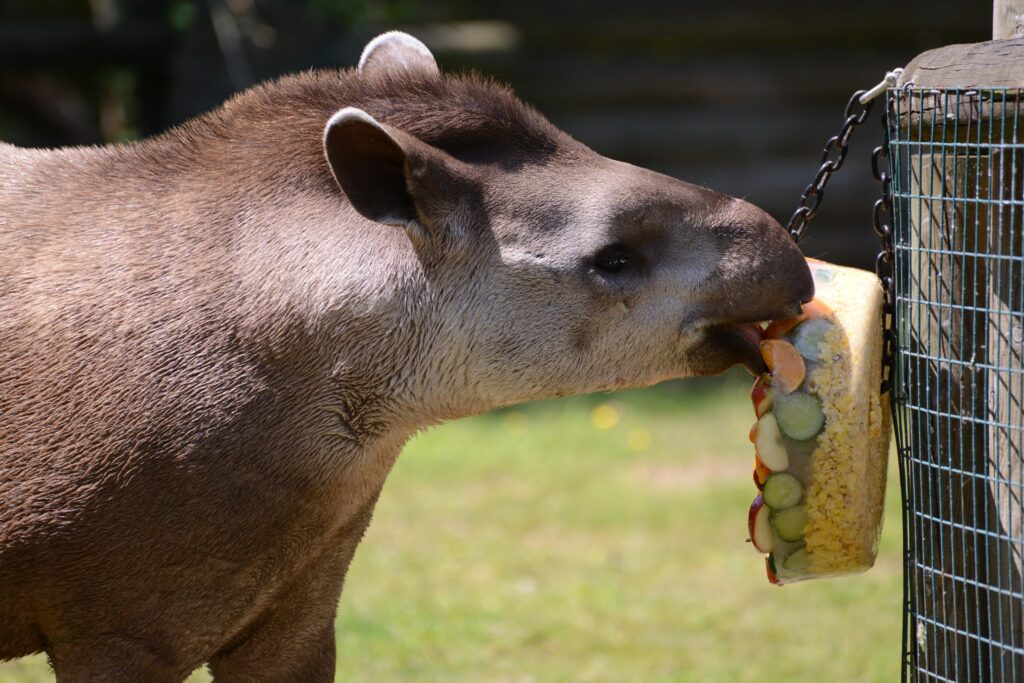Key Facts

Their closest relatives are the horse and rhino. They are excellent swimmers spending most of their time in or close to water, eating aquatic plants and cooling down. When frightened, tapirs take to the water and breathe with their snout poked above the surface like a snorkel.
A relative of the rhino the Brazilian tapir, or lowland tapir, is one of four species of tapir.
Small eyes provide poor vision, but a sense of smell and hearing is acute. They communicate in a number of ways. A high-pitched whistle is one of the most common tapir vocalizations. A snort with foot-stamping usually means it is getting ready to defend itself. Urine marking is another important signal and tapirs make paths through the forest, sniffing along their route and identifying other tapirs in the area. Tapirs are solitary in the wild, pairing only to mate. After a 13-month gestation period, a single calf is born with white spots and stripes that mimic the dappled light on the forest floor so acts as camouflage. The thick, coarse neck mane helps protect against the neck bite of the jaguar, its main predator.
All four tapir species are endangered or threatened, largely due to hunting and habitat loss.
90% of The Lowland Tapir Conservation Initiative’s funding comes from zoos!
In 2019, our head keeper James Cork went out to Brazil to assist withvital conservation work for Iniciativa Nacional para a Conservação da Anta Brasileira

Social